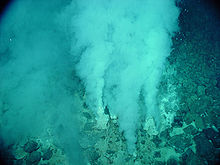Tag Archives: larvae
Despite Oil Spill, Fish Fry Showing up In Record Numbers in Gulf of Mexico
Snapper fry are all over the place. There are also trout, grunt and grouper fry all over the place as well. The early tabulation of the annual count in the beds of grass spattered about the northern part of the Gulf of Mexico seems to suggest that the larvae of some kinds of fish have survived the BP oil fiasco, and what’s more, there are swarms of them.
“My preliminary assessment, it looks good, it looks like we dodged a bullet. In terms of the numbers of baby snapper and other species present in the grass beds, things look right,” commented a scientist with the University of North Carolina’s Institute of Marine Science, Joel Fodrie, who has been actively involved in the study of seagrass meadows along the coast for the past five years.
Joel’s group has taken samples of the different sea life in the grass beds in Alabama, Mississippi, and the Florida Panhandle. They will be taking a sample from around Louisiana’s Chandeleur Islands come this Autumn.
Back at the height of the fiasco, when a seemingly endless stream of oil was floating about on the surface, researchers were most concerned as to whether the trillions of larvae which hatch each spring offshore would survive the severe contamination of the spill.
It’s looking like they did, and it’s a good thing too. It just goes to show you that mother nature is more resilient than we give her credit for. There is hope yet for the Gulf to make a full recovery, and that folks, is good news indeed.
Breaking News: New Snail Larval Form discovered: First since 1978!
Well, just when you are comfortable knowing that what you know is accurate, the world comes along and throws you another curve ball. We used to know there were 9 planets, now there are 8, we used to know the earth was the center of the solar system, now we know better.. Now, just when you thought you pretty much knew your basic zoology, an amazing new discovery has been made that is basically going to force some poor guy to rewrite the molluscan, larval ecology and invertebrate text books.
Between the 1850’s and the 1870’s supposedly all known forms of snail were discovered. However, thanks to modern technology, and some persistent researchers, we now know that we were mistaken, and that the forms of snail are really much more diverse than originally thought.
This new snail larval form is really turning heads, and here’s why. This larval form discovered is the first of its kind to be found to be a free-swimming pre-veliger larva. This is rather interesting because normally they don’t swim freely. Not only that but it appears these new little guys can actually turn hydrogen sulfide, and methane as an energy source.. Imagine, a snail which subsists on farts…
Credited with this astounding discovery are Anders Waren, a Swedish Naturalist from the Royal Museum of Natural History in Stockholm, and collegue Philippe Bouchet.
They have been working on this project since the 1980s, and have finally made their marks on history. These are a pair to watch folks, who knows what they might discover next?
Carbon Dioxide – The end of clownfish
The oceans of the world absorb a large part of the carbon dioxide released into the atmosphere by us burning fossil fuels, burning forests to make room for fields, etc. This have helped slow down global warming, but new studies shows that it might have a devastating effects on certain fish species such as clown fish. Tests performed on clown fish larvae have shown that increased levels of carbon dioxide can make them disoriented an unable to find a suitable home and avoid predators. The pH level in the ocean has dropped 0.1 since pre-industrial times due to the absorption of carbon dioxide and researchers believe that it will fall another 0.3-0.4 before the end of this century.
This increased acidicy of the water can cause serious problems for clown fish larvae, since clownfish larvae lose the ability to sense vital odours in more acidic waters – probably owing to the damage caused to their olfactory systems. Kjell Døving (Oslo University), co-author of the rapport that was published in US journal Proceedings of the National Academy of Sciences, says “They can’t distinguish between their own parents and other fish, and they become attracted to substances they previously avoided. It means the larvae will have less opportunity to find the right habitat, which could be devastating for their populations.“
The research indicates that other species might be affected in a similar way and might have a hard time finding their way to suitable habitats if carbon dioxide levels raises in the oceans.
About the study
The study was executed in such a way that the researchers checked how well clownfish larvae could detect smells in normal sea water (pH 8.15) and how well they could detect odours in more acidic water (at levels predicted to be a reality around the year 2100 and later). The test showed that at pH 7.8 the larvae stopped following scent trails released by reefs and anemones and started following sent trails they would normally avoid; scents that are associated with environments not suitable for clown fish. The larvae also lost the ability to use smell to distinguish between their parents and other fish. At pH 7.6 the larvae were unable to follow any kind of odour in the water, and instead swam in random directions.


